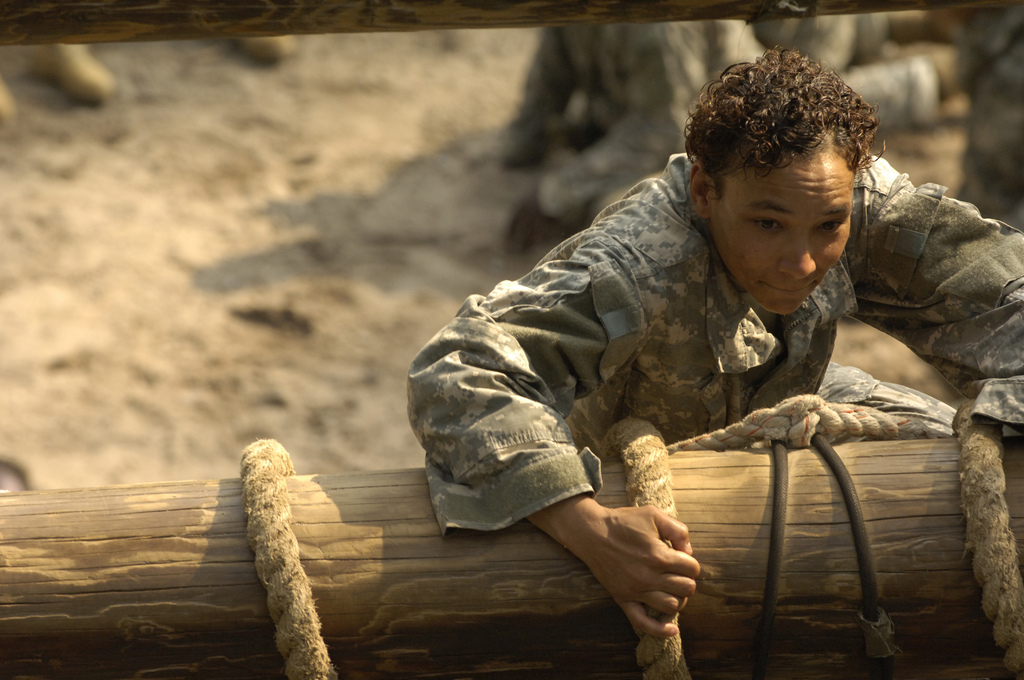Students from Dr. Jacqueline Angel’s LBJ School seminar “Women and the Changing World of Work,” address obstacles faced by women in the military in this series. To view more of the series, please click the “Women in the Military” tag below.
On any given night in the United States, an estimated 107,000 homeless veterans reside in the country; 7,000 of which are women. In 2010, the Women’s Bureau of the U.S. Department of Labor identified homeless female veterans as a priority issue, signifying the need for heightened attention on these women who risk their lives abroad only to return to discouraging circumstances. As the female veteran population grows, these struggles and experiences shed light on the ways gender, race, ethnicity and age interact within the current state of the American economy.
Barriers faced by female veterans are multi-faceted and do not begin after service. As an all-volunteer force, women serve in the military by choice. Furthermore, their motivations and ultimate decision to enlist set them apart from their non-veteran counterparts. Academic literature has been inconclusive in determining whether post-service barriers are products of military experience, pre-military life circumstances, military stressors or traumas, or a confluence of several of these factors. Nevertheless, there are a number of shared circumstances that negatively affect these women’s re-entry into civilian work and life.
The explosion of female enlistment since the 1970s and projected growth has shifted the archetypal image of the American veteran from the grizzled, white, male, Vietnam veteran, to a younger, more ethnically diverse, independent woman. Transitional barriers could be related to these demographic characteristics. The median age for female veterans is 47, compared with 61 for male veterans, and female veterans are four times more likely to identify as a racial minority than their male counterparts. While minority veterans make up 20 percent of the total veteran population, one-third of minority veterans are female, with black and Hispanic female veterans overrepresented. Female veterans also are more likely to be single, divorced, widowed or separated than male veterans, and they are nearly twice as likely to be divorced than their non-veteran counterparts. Gender, age, ethnicity, and marital status may be intersecting and interacting in ways that heighten female veterans’ disadvantage during their civilian transition.
Female veterans also encounter economic barriers that are reflective of the nation’s gendered pay equity issue. Although they earn more than their non-veteran counterparts, female veterans face earnings gaps when compared to male veterans, despite being better educated and more likely enroll in higher education post-service. In addition, they are four times more likely to be homeless than civilian women – though it is of note that this is a disturbing trend of the entire veteran population. Further, because 21 percent of female veterans have dependent children, the socio-economic struggles many female veterans face when seeking employment, or simply day-to-day shelter, may be further exacerbated.
The challenges faced by female veterans after service indicate a need for policy solutions that can address evolving national demographic trends and occupational barriers embedded within national social structures. The American public has both moral and economic interests in addressing barriers to post-service transition. From an economic perspective, ensuring female veterans’ preparedness for work strengthens U.S. competitiveness and makes better use of labor market potential. From a moral perspective, if women join the military in part because of limited employment opportunities, then we are morally obligated to ensure those same barriers do not exist post-service.
A helpful framework for change views policies from an organizational, employer, and individual level. First, at an organization level, promising reforms seek to strengthen services needed for women to make a healthy transition into the civilian workforce. Options include compiling more extensive data on service provision, evaluating existing transition programs and identifying any additional barriers to access. By identifying programs that are working and those that are not, improvement efforts are more targeted.
Employer-level reforms emphasize flexible work policies and build employers’ capacity to support female veterans. Recommendations include empowering businesses and organizations who seek to hire female veterans, creating systems to share best practices for addressing the needs of female veterans as employees, employing flexible work-family balance policies, and building leadership pipelines. Similar options are highlighted as a part of the U.S. House Committee on Veteran Affairs’ Veteran’s Opportunity to Work (VOW) Act of 2011. By implementing these changes, employers have the incentive and capacity to hire and better support female veterans.
Finally, at the individual level, policy must seek to empower female veterans to obtain stable careers that offer, at least, a living wage and potential for career advancement. Options include providing training and job preparation programming beyond résumé workshops, engaging with mentors and transition counselors, and employing long-term strategies for transition follow-up. These strategies seek to strengthen the skills and preparedness necessary to make a smooth transition into the civilian labor market.

